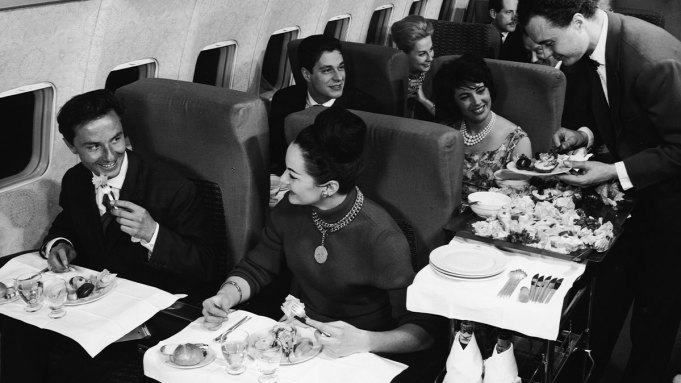Welcome to Ask Robb. At Robb Report, we’ve assembled a crack team of the world’s best travel specialists, our Travel Masters. Their expertise and insight in luxury travel of all kinds is unparalleled. So we’re tapping into it directly for a new series, where our readers—that’s you—pose the pickiest travel problems to the panel. These aren’t workaday issues, whether wrangling a refund or booking a guide, but rather the unique, specific challenges that only veteran globetrotters face.
Dear Robb Report: I am a very picky traveler when I fly commercial, and I refuse to book anything other than a true first class seat. But my travel specialist tells me it’s getting harder and harder to find them on my routes, as it seems that first class cabins are being removed by many airlines. Is she telling the truth, or just not trying hard enough to find what I need? And if I want to stick with first class, come what may, which offerings still truly offer service that stands apart from business?
Yours, Pointy-End Pamela
The enclosed suites in Emirates First Class section are one of commercial aviation’s most luxe experiences.
Firstly, you can trust that specialist 100 percent. It’s true that first class seats—that’s international long haul, rather than whatever an airline dubs its domestic options—are becoming harder to find. Last year, American Airlines announced that it would refit cabins to remove the priciest, roomiest seats, justifying the decision by simply saying customers’ interest was waning. Cathay Pacific just decided to nix first class as a cabin when it retrofits some of its planes (though it will upgrade first class seats even further on another chunk of its fleet). Meanwhile, United Airlines and Delta have long operated just one ultra-premium cabin, as has the part-Delta-owned Virgin Atlantic where the product is dubbed “Upper Class.”
The slump in demand is real, according to Black Tomato’s Sunil Metcalfe: “In the age of remote work, it’s the first thing that has been slashed from budgets, and at a corporate level you can understand. Now it’s often business class instead.”
Yet while road warriors might now languish in more constrained lie-flats, Metcalfe says strong demand from the wealthier tranche of leisure travelers persists. Put simply, flying long haul on a commercial carrier in first class is often more feature-rich and, well, comfier than being cramped in a smaller charter aircraft, as doubtless you recognize. And for folks like you, there’s an upside to this downturn.
“There are definitely some bargains to be had when there is a first-class cabin, because airlines are suffering,” says Metcalfe, noting that tickets of this kind are typically 10 to 15 percent cheaper than pre-pandemic in 2019.
But Metcalfe dismisses the top tier cabin of legacy operators like British Airways or Air France—saying he was “definitely underwhelmed” by his experience with the latter’s La Premiere. Compare that with the Middle Eastern carriers, Dubai’s Emirates, Qatar, and Etihad from Abu Dhabi, each of which has made its first-class cabin luxury catnip for even cynical globetrotters. Standout of these, per Metcalfe, is Emirates, which emphasizes the good-lifing aspect of flying upfront as much as the efficiencies, via impressive vintage champagnes—Dom Pérignon Plénitude 2, for example—and unlimited caviar service; famously, there’s also a shower onboard. Qatar’s first class is good, but slightly more corporate-skewing, he adds. Intriguingly, Qatar has also announced it will not incorporate the cabin in future aircraft designs.
Still, Metcalfe has a few other insider tips on the best first class options around the world. For West Coasters, who might typically opt for Singapore Airlines by default, consider Qantas, he says. “That experience is head and shoulders above the rest of the Avios family,” he explains, referring to the loyalty scheme deployed by British Airways and several other One World partners. “The ground treatment really sets them apart, and the lounge in Singapore competes with Singapore Airlines directly. It’s exceptional. And they’ve definitely seen a lot of softening of prices since the pandemic, as I don’t think they’ve been getting as many people as they were expecting.”

Experts says Emirates Airbus A380-800 jetliner is still the best in the game.
Giusepe Cacace/AFP via Getty Images
Front-of-plane snobs should consider the route Lufthansa operates between Chicago and Frankfurt, too. It still deploys the increasingly mothballed Boeing 747, with just eight cabins right in the nose. Lufthansa usually charges between $15,000 and $20,000 round trip. Connect via that highly efficient airport to anywhere in southern Europe, Metcalfe suggests, as many of his clients might. The best secret for transatlantic first class, though, is the two flights operated by Emirates.
These routes are part of the so-called fifth freedom network. Carriers have typically only been allowed to operate routes which either begin or end in their home country; in certain cases, though, they’ll be allowed to fly between two destinations outside that network. That’s the case for the regular service on Emirates from New York-JFK to Milan Malpensa and from Newark to Athens in Greece. Both routes feature planes with top-tier first class cabins that outstrip any European rival and can often cost the same or less as a business class seat on, say, British Airways, per Metcalfe—typically for between $12,000 and $14,000 round trip.
“Clients will ask ‘What can we do to Europe instead of sending our own jet over for $1 million round trip?’ and I’ll say ‘Have you flown Emirates?’” he says.
There’s no reason to ever fly any other way to Europe, Pamela.


